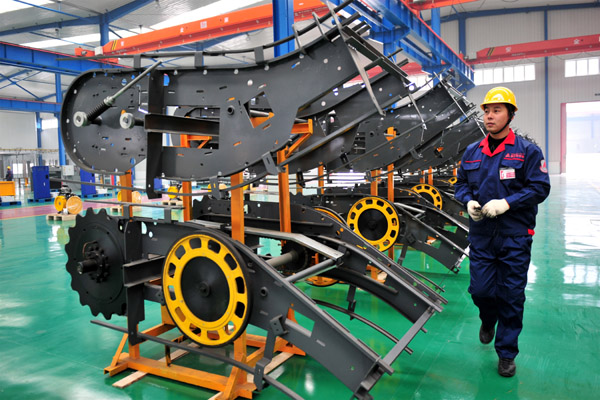 |
|
A technician checks the elevator parts in a company in Yichang city, Central China's Hubei province, Jan 13, 2014. [Photo/IC] |
Although six years have passed since the global financial crisis broke out, many countries have not yet overcome its impact with the global economy is still facing uncertainties. And given the economic slowdown, albeit slight, in China, it can be said that the Chinese and global economies have entered stages - which can be called "new normals" - which are far different from those in pre-crisis times.
In the past three and half decades China has passed two historic milestones. In 1998, it graduated from a low-income to a lower-middle economy, according to World Bank criteria. And in 2001, it became an upper-middle-income economy. China now faces new challenges to cross the next economic threshold because of the "new normal", which is marked by six factors.
First, economic growth will slow down. After more than 30 years of fast-paced growth, China's economic engine is losing some steam due to internal and external conditions. The most important thing for it to do now is to free itself of the "speed complex" and "gear-shift anxiety" to achieve qualitative, as opposed to quantitative, GDP growth at a sustainable and more reasonable pace.
Second, the center of gravity of the Chinese economy will shift to the higher end of the industrial spectrum. As a rule, rising per capita income leads to greater focus on the tertiary industry to develop an optimum industrial structure. The "new normal" means an increase in secondary and tertiary industries, more advanced manufacturing technologies, a fast-growing service industry and larger market supply of high-quality capital and consumer products to generate greater added value.
Third, the gap between urban and rural areas will be narrowed. The warped distribution of national resources has hampered China's economic development and wealth growth. The "new normal" will lead to a "balanced development" of industries across the eastern, central and western regions, and large-scale farming and land reform will expedite the modernization of agriculture and thus enable rural and urban areas to develop in unison.

I’ve lived in China for quite a considerable time including my graduate school years, travelled and worked in a few cities and still choose my destination taking into consideration the density of smog or PM2.5 particulate matter in the region.